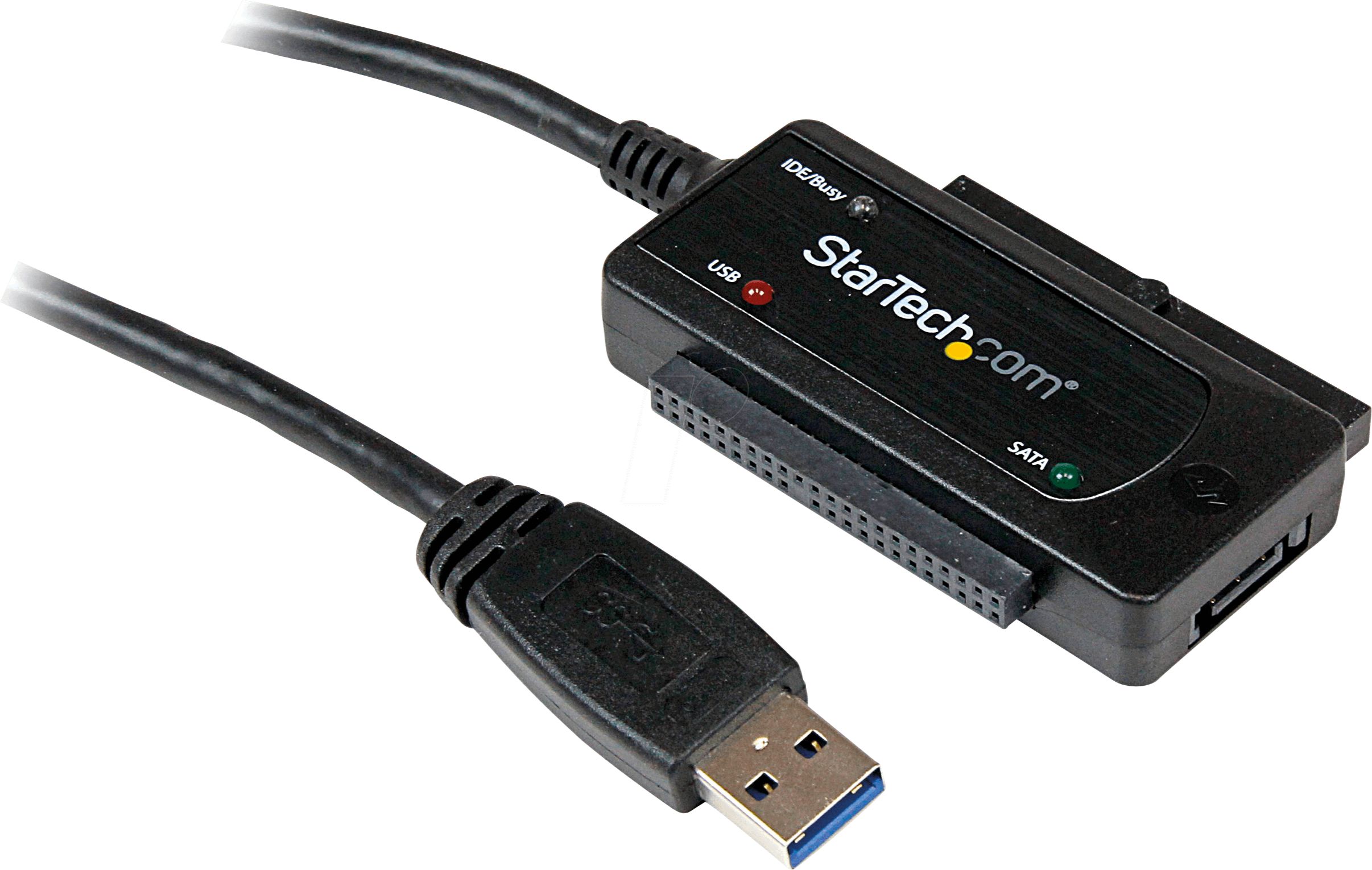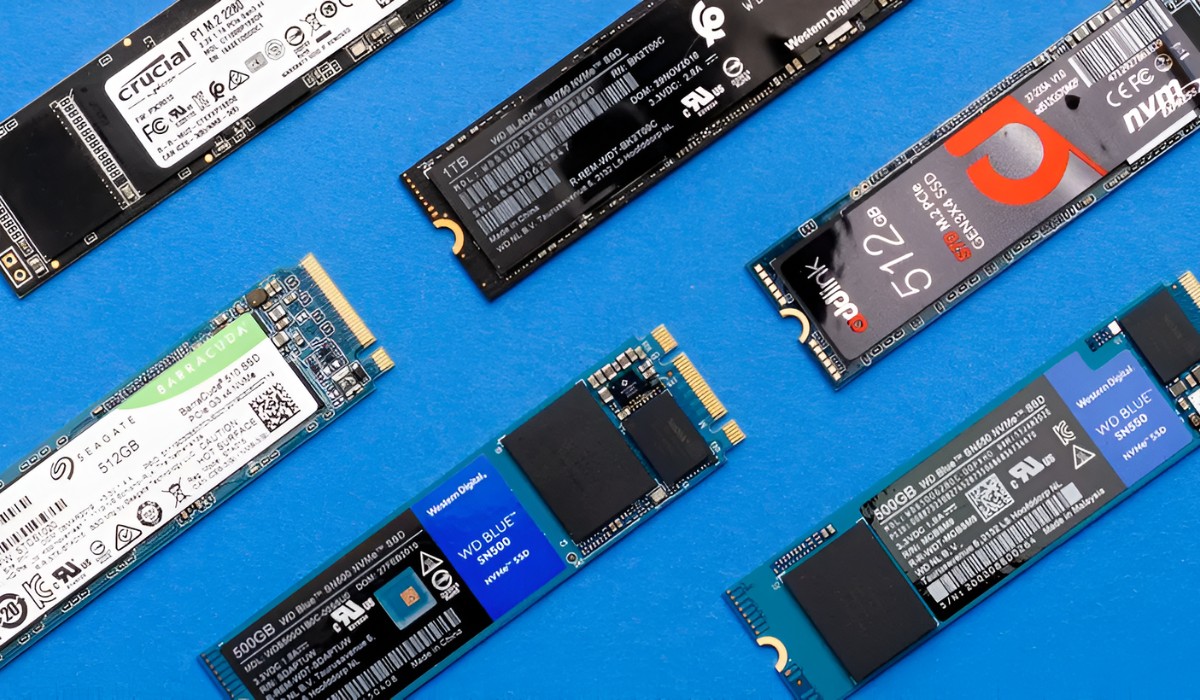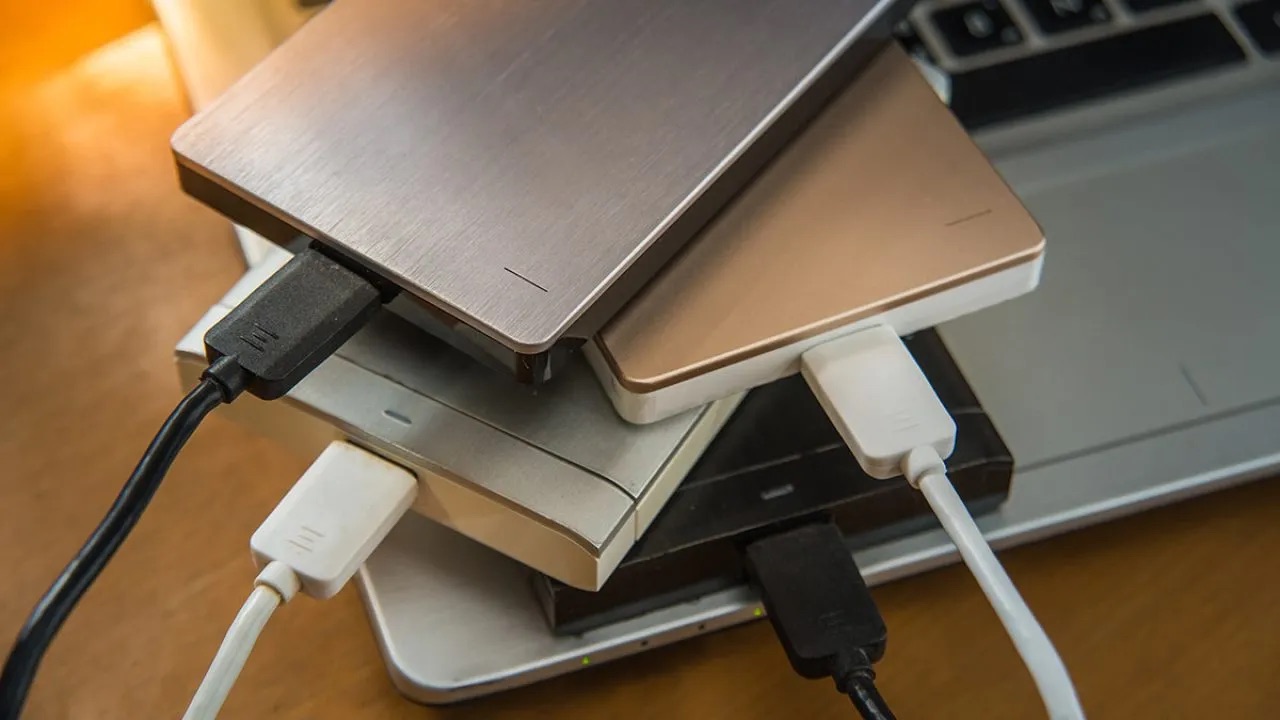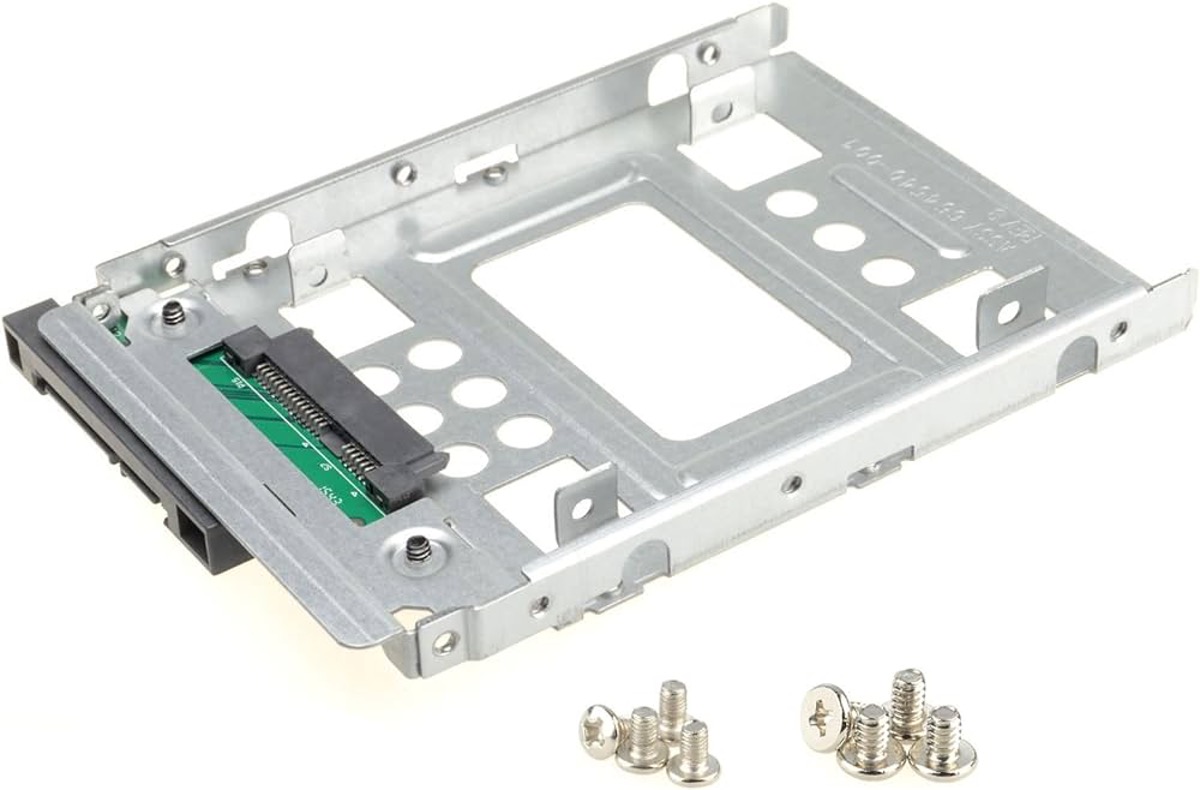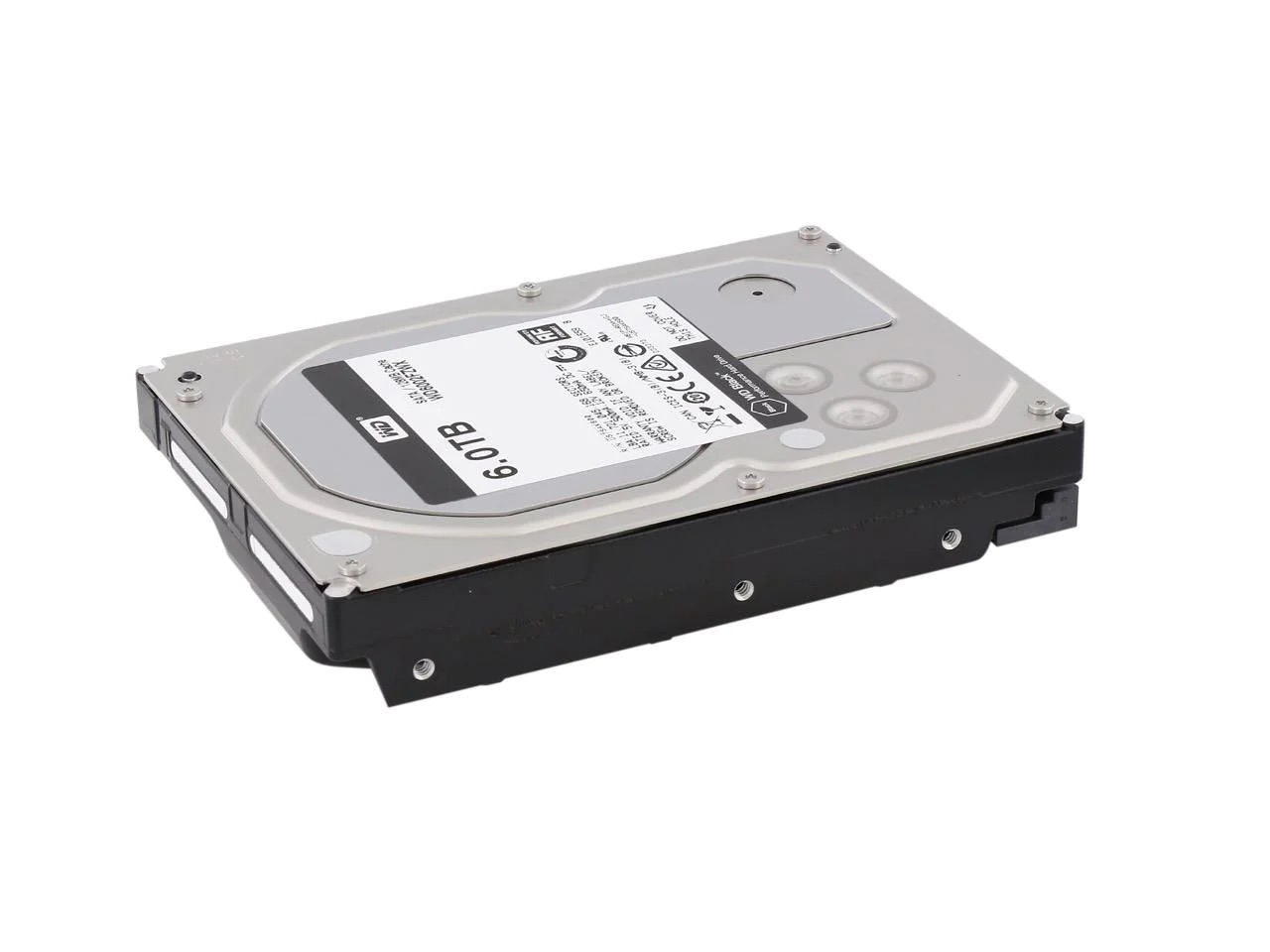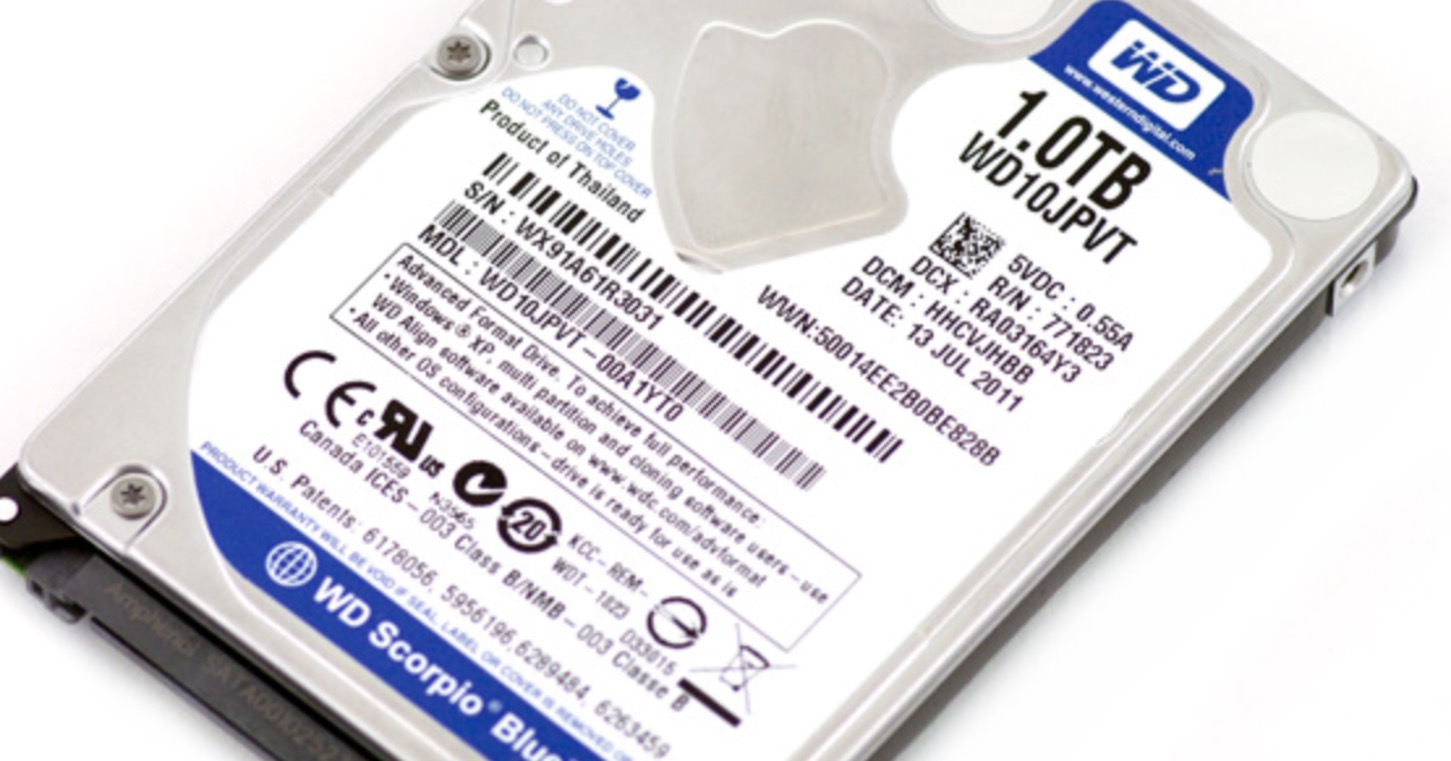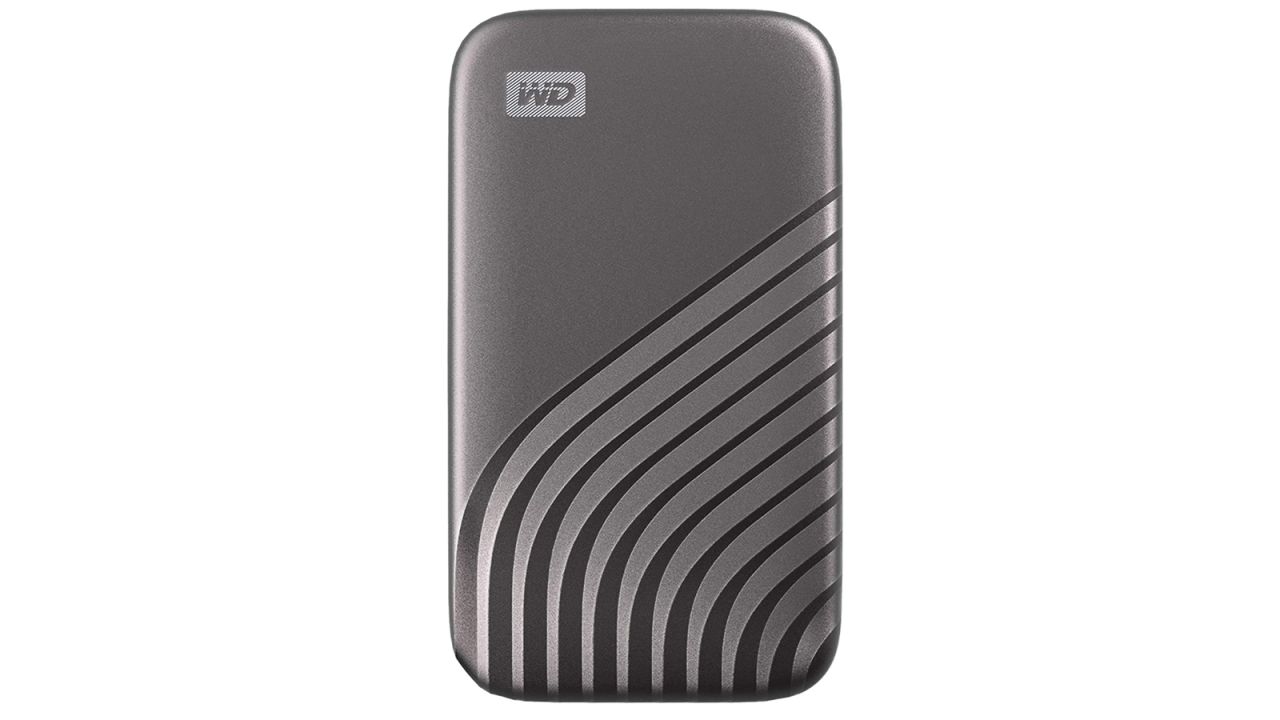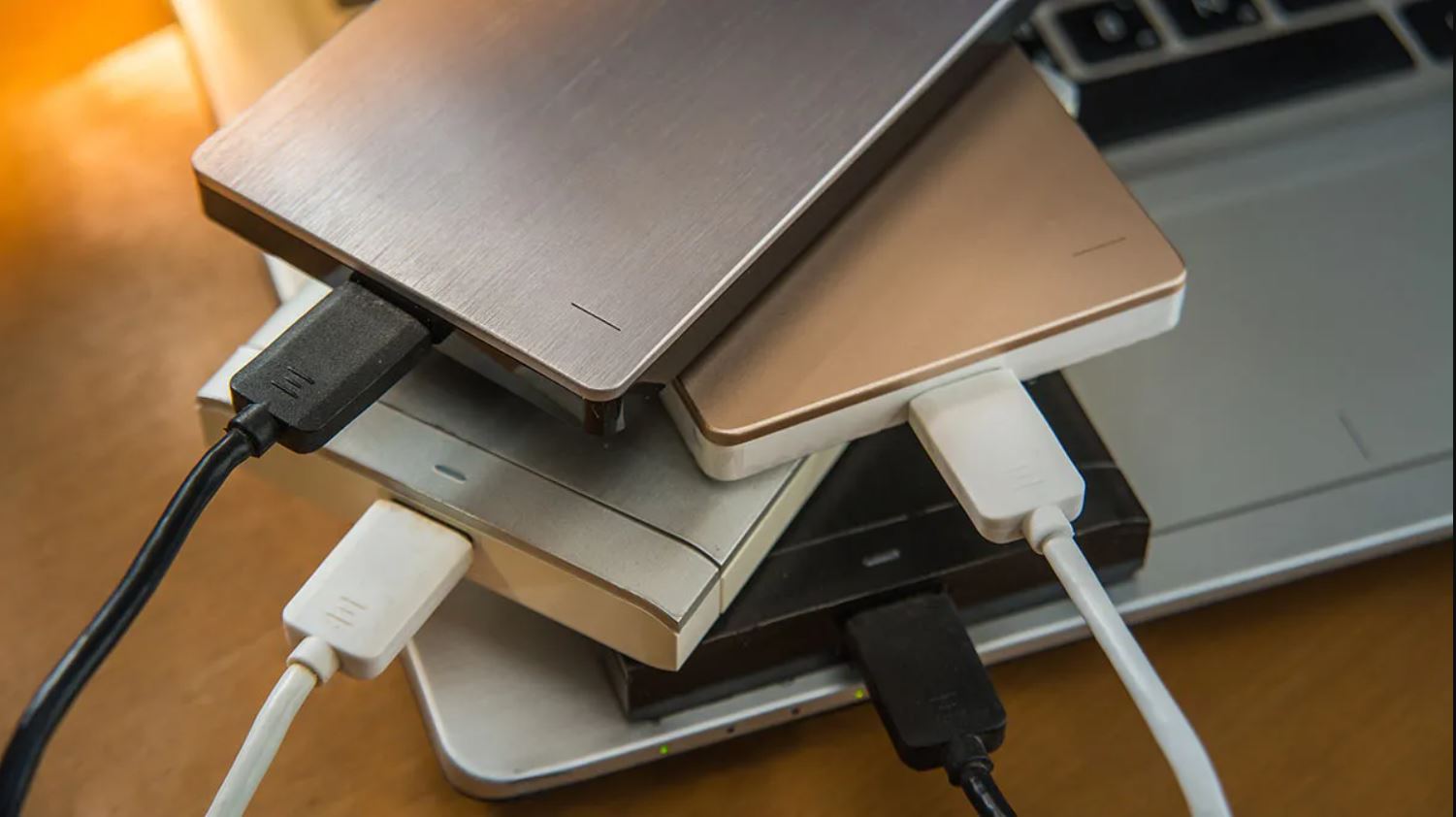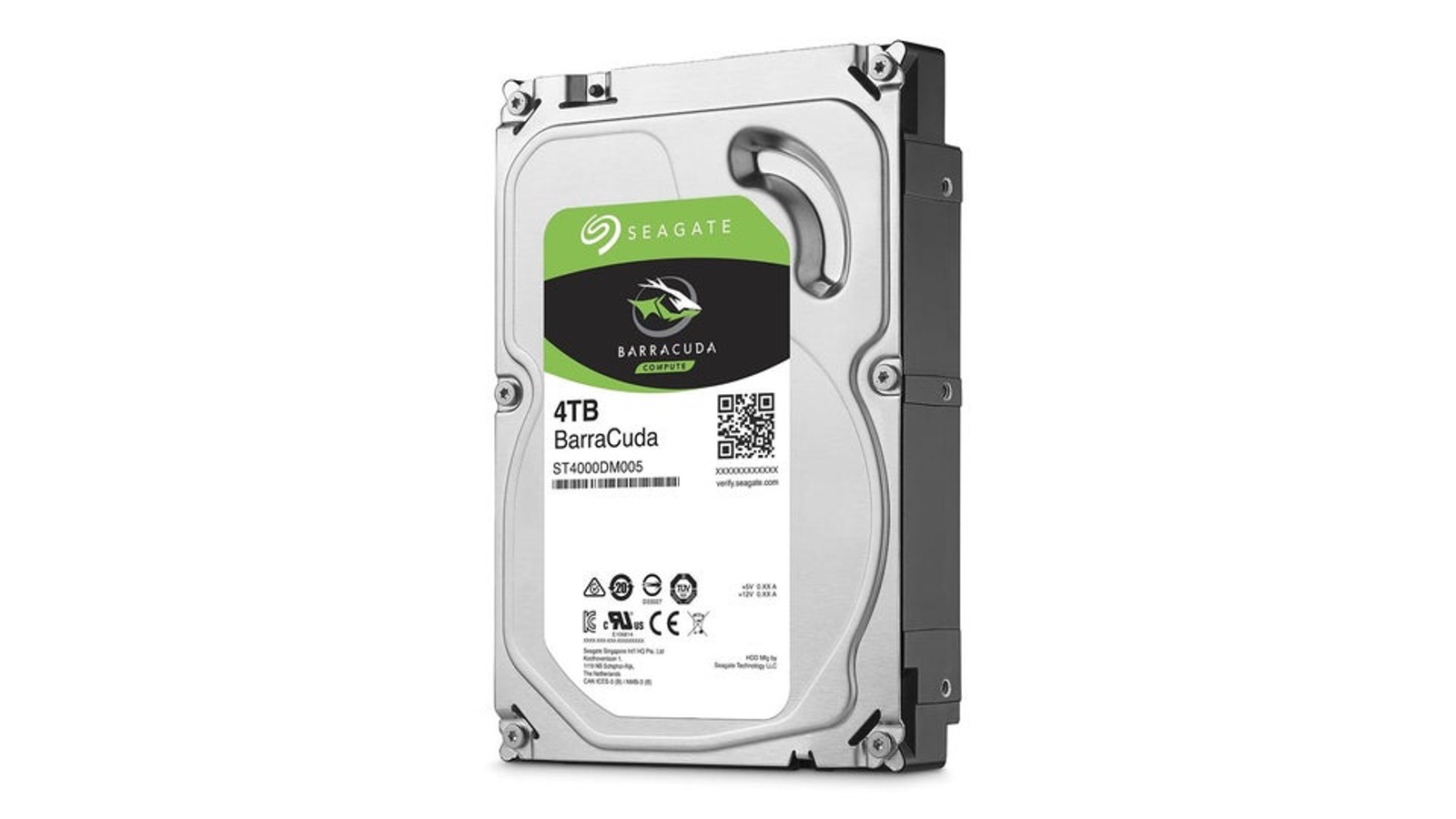Introduction
Welcome to the world of technology where innovation is constantly transforming the way we store and transfer data. If you are someone who deals with external hard drives, you might have heard about the remarkable invention known as a Hard Disk Drive to USB 3.0 Converter. In this article, we will explore the functionality, benefits, and considerations involved in using this remarkable device.
In today’s digital era, data storage and retrieval have become paramount. Whether you are a professional photographer storing gigabytes of high-resolution images or a business owner handling extensive databases, having a reliable and efficient means of transferring data is crucial. That’s where a Hard Disk Drive to USB 3.0 Converter comes into play.
So, what exactly is this converter? Essentially, it is a device that allows you to connect an internal hard disk drive (HDD) to a computer or any device with a USB 3.0 port. This conversion process allows you to access and transfer the data stored on the HDD swiftly and conveniently.
The advancement from USB 2.0 to USB 3.0 has been a game-changer when it comes to data transfer speeds. USB 3.0 provides significantly faster transfer rates compared to its predecessor, enabling users to transfer large files in a fraction of the time it would take using USB 2.0.
In the past, if you wanted to retrieve data from an internal HDD, you would have had to install it onto a computer as a secondary drive. However, thanks to the innovation of the Hard Disk Drive to USB 3.0 Converter, this process has become much simpler and more convenient.
Whether you are a tech enthusiast who loves tinkering with old computer parts or an IT professional who frequently needs to access data from different hard drives, a Hard Disk Drive to USB 3.0 Converter can be an invaluable tool. By eliminating the need for complicated installations, these converters offer a plug-and-play solution that saves time and effort.
In the following sections, we will delve deeper into the working mechanism of a Hard Disk Drive to USB 3.0 Converter and the myriad benefits it offers. Additionally, we will discuss the factors you should consider when choosing the right converter for your needs. By the end of this article, you will have a comprehensive understanding of this remarkable device and be ready to make an informed decision that suits your requirements.
What Is a Hard Disk Drive to USB 3.0 Converter?
A Hard Disk Drive to USB 3.0 Converter is a device that allows you to connect an internal hard disk drive (HDD) to a computer or any device with a USB 3.0 port. It essentially converts the interface of an internal HDD into a USB 3.0 interface, making it easily accessible and compatible with a wide range of devices.
Internal hard drives are commonly found in desktop computers and laptops. They offer high-capacity storage for operating systems, software, and personal files. However, accessing the data stored on an internal HDD can be challenging, especially if you need to retrieve files from a non-functioning computer or want to transfer data to a different device.
A Hard Disk Drive to USB 3.0 Converter bridges this gap by providing a simple solution for connecting an internal HDD to a USB 3.0 port. This conversion process allows you to access the data stored on the internal HDD as if it were an external hard drive.
One of the notable features of a USB 3.0 Converter is its compatibility with USB 3.0 ports. USB 3.0, also known as SuperSpeed USB, offers significantly faster data transfer speeds compared to its predecessor, USB 2.0. With USB 3.0, you can experience data transfer rates of up to 5 gigabits per second (Gbps), making it ideal for handling large files and multimedia content.
By using a Hard Disk Drive to USB 3.0 Converter, you can unleash the full potential of your internal HDD. Whether you want to transfer files to another computer, create backups of important data, or retrieve files from a non-functional computer, a USB 3.0 Converter provides a convenient and reliable solution.
Furthermore, a Hard Disk Drive to USB 3.0 Converter is a versatile tool that supports various types of internal HDDs. It is compatible with both traditional hard disk drives and newer solid-state drives (SSDs). This flexibility allows you to access and transfer data from different types of storage devices, regardless of the form factor or technology.
In summary, a Hard Disk Drive to USB 3.0 Converter is a valuable device that enables you to connect an internal HDD to a USB 3.0 port. It offers fast and efficient data transfer speeds, making it convenient to access, transfer, and backup your data. Whether you are an IT professional, a tech enthusiast, or an average user, a USB 3.0 Converter can greatly enhance your data management capabilities.
Benefits of Using a Hard Disk Drive to USB 3.0 Converter
Using a Hard Disk Drive to USB 3.0 Converter offers numerous benefits that can greatly improve your data management and accessibility. Let’s explore some of the key advantages:
1. Convenience and Portability: One of the primary benefits of using a USB 3.0 Converter is the convenience it provides. You can easily connect an internal HDD to any device with a USB 3.0 port, allowing you to access and transfer data without the need for complex installations or disassembling your computer.
2. Fast Data Transfer Speeds: USB 3.0 offers significantly faster transfer speeds compared to previous versions, such as USB 2.0. With transfer rates of up to 5Gbps, you can quickly and efficiently transfer large files and multimedia content, saving you valuable time and enhancing your productivity.
3. Compatibility: A USB 3.0 Converter is compatible with various operating systems, making it versatile and accessible for users across different devices. Whether you are using a Windows, Mac, or Linux system, you can easily connect and access the data stored on your internal HDD.
4. Easy Data Recovery: In the unfortunate event of a computer failure, a USB 3.0 Converter can be a lifesaver. By connecting your internal HDD to another device using the converter, you can easily recover your important files and documents without the need for expensive data recovery services.
5. Backup and Cloning: With a USB 3.0 Converter, you can create backups of your data quickly and easily. This feature is especially useful for individuals and businesses that deal with large volumes of data and need to ensure data redundancy and security.
6. Upgrading and Repurposing Old HDDs: If you have old internal HDDs lying around that you no longer use, a USB 3.0 Converter allows you to repurpose them as external storage devices. Instead of letting them go to waste, you can turn them into useful storage solutions for storing and accessing files.
7. Cost-effective Solution: Purchasing a USB 3.0 Converter is considerably more cost-effective than buying an external hard drive with similar storage capacity. It allows you to leverage the storage capabilities of your existing internal HDDs without the need for additional hardware.
By utilizing a Hard Disk Drive to USB 3.0 Converter, you can enjoy the convenience, speed, and versatility of accessing and transferring data from internal HDDs. Whether you are an individual user or a business professional, a USB 3.0 Converter is an invaluable tool that enhances your data management capabilities and ensures seamless data accessibility.
How Does a Hard Disk Drive to USB 3.0 Converter Work?
A Hard Disk Drive to USB 3.0 Converter works by converting the interface of an internal hard disk drive (HDD) into a USB 3.0 interface, allowing you to connect the internal HDD to a device with a USB 3.0 port. This process enables you to access and transfer the data stored on the HDD conveniently.
The converter is typically a small device that consists of a SATA or IDE connector on one end and a USB 3.0 connector on the other. The SATA or IDE connector is designed to attach to the interface on the internal HDD, while the USB 3.0 connector connects to a USB 3.0 port on a computer or any compatible device.
When you connect the internal HDD to the converter and plug it into a USB 3.0 port, the converter acts as a bridge, translating the signals and protocols between the HDD and the USB interface. This enables the computer or device to recognize the internal HDD as an external storage device.
Once the internal HDD is connected and recognized by the computer or device, you can treat it as you would any other external storage device. You can access the files, transfer data to and from the HDD, create backups, or perform other tasks that require the use of storage media.
The data transfer between the internal HDD and the computer or device happens through the USB 3.0 connection. USB 3.0 offers faster transfer speeds compared to previous versions, allowing for efficient data transfer and quick access to files stored on the internal HDD.
The converter also provides power to the internal HDD, eliminating the need for an external power source. This makes the setup simple and convenient, as you only need to connect the converter to the HDD and the USB 3.0 port to start using the internal HDD as an external storage device.
It is important to note that the specific mechanism and design of a Hard Disk Drive to USB 3.0 Converter may vary slightly between different models and manufacturers. However, the fundamental principle remains the same: converting the interface of the internal HDD to a USB 3.0 interface, allowing for easy and seamless connectivity.
In summary, a Hard Disk Drive to USB 3.0 Converter works by converting the interface of an internal HDD into a USB 3.0 interface, enabling you to connect the HDD to a device with a USB 3.0 port. This conversion process allows for easy access, data transfer, and utilization of the internal HDD as an external storage device.
Factors to Consider When Choosing a Hard Disk Drive to USB 3.0 Converter
When selecting a Hard Disk Drive to USB 3.0 Converter, there are several important factors to consider to ensure that you choose the right one for your needs. Here are some key factors to keep in mind:
1. Compatibility: Ensure that the converter you choose is compatible with the type of internal hard disk drive (HDD) you will be using. Check if it supports SATA or IDE connections, as well as the size compatibility for your specific HDD form factor (e.g., 2.5-inch or 3.5-inch).
2. Data Transfer Speed: While USB 3.0 offers faster transfer speeds compared to previous versions, not all converters provide the same level of performance. Look for a converter that can handle the maximum USB 3.0 transfer rate of 5Gbps to ensure optimal data transfer speed.
3. Build Quality and Durability: Consider the build quality and durability of the converter. Look for a well-constructed converter with a solid housing to protect the internal components and ensure longevity. This is especially important if you plan to use the converter frequently or in more demanding environments.
4. Power Supply: Check whether the converter provides sufficient power to the internal HDD. Some converters rely solely on the power from the USB 3.0 port, while others may have an additional power adapter to ensure stable power delivery. Make sure the converter can adequately power the HDD you will be using.
5. Plug-and-Play Compatibility: Verify if the converter is plug-and-play compatible with your operating system. Most modern converters should work seamlessly with Windows, Mac, and Linux systems, but it’s always a good idea to double-check for any compatibility issues.
6. Extra Features: Consider any additional features or functionalities provided by the converter. Some converters may include features such as LED indicators, on/off switches, or compatibility with specific software or backup solutions. Evaluate if these features align with your requirements and preferences.
7. Price and Warranty: Compare the prices and warranty options of different converters. While it’s important to consider your budget, prioritize quality and performance over the lowest price. Look for converters that offer a reasonable warranty period to protect your investment.
By taking these factors into account, you can make an informed decision when choosing a Hard Disk Drive to USB 3.0 Converter. Consider your specific needs and preferences, do thorough research, and read product reviews to ensure that you select the right converter that meets your requirements and provides a seamless and reliable data transfer experience.
Step-by-Step Guide on How to Use a Hard Disk Drive to USB 3.0 Converter
Using a Hard Disk Drive to USB 3.0 Converter is a straightforward process that allows you to connect an internal hard disk drive (HDD) to a device with a USB 3.0 port. Follow these simple steps to effectively utilize the converter:
Step 1: Choose the Right Converter
Start by selecting a Hard Disk Drive to USB 3.0 Converter that is compatible with your internal HDD. Consider factors such as compatibility, data transfer speed, build quality, and power supply capabilities before making a purchase.
Step 2: Power off the Computer or Device
If you are connecting the internal HDD to a computer, ensure that it is turned off before proceeding. This prevents any potential data loss or damage during the connection process.
Step 3: Connect the Converter to the Internal HDD
Attach the SATA or IDE connector on the converter to the interface on the internal HDD. Ensure a secure connection by gently applying pressure until the connectors are fully seated.
Step 4: Connect the USB 3.0 Converter to a USB 3.0 Port
Plug the USB 3.0 connector of the converter into a USB 3.0 port on your computer or device. Ensure the connection is secure to guarantee proper data transfer and power delivery.
Step 5: Power on the Computer or Device
If you are connecting the internal HDD to a computer, power it on and wait for the operating system to detect the connected device. You should see a notification or hear a sound indicating that a new drive has been recognized.
Step 6: Access and Transfer Data
Once the internal HDD is connected and recognized, you can access and transfer data as you would with any other external storage device. Use file explorer or any data management software to browse, copy, move, or backup your files.
Step 7: Safely Disconnect the Converter
Before removing the converter, ensure that the data transfer process is complete and that no files are actively being accessed or transferred. Safely eject or disconnect the converter using the operating system’s recommended method to avoid data corruption or loss.
By following these simple steps, you can effectively use a Hard Disk Drive to USB 3.0 Converter to connect and utilize your internal HDD as an external storage device. Enjoy the convenience, speed, and versatility that the converter provides for your data management needs.
Frequently Asked Questions (FAQs)
Here are some frequently asked questions about Hard Disk Drive to USB 3.0 Converters:
Q1: Is a Hard Disk Drive to USB 3.0 Converter compatible with both HDDs and SSDs?
A: Yes, most converters are compatible with both traditional hard disk drives (HDDs) and solid-state drives (SSDs), allowing you to connect and use either type as external storage.
Q2: Can I use a USB 3.0 Converter with a USB 2.0 port?
A: Yes, USB 3.0 Converters are backward compatible with USB 2.0 ports. However, you will experience slower data transfer speeds when using a USB 3.0 Converter with a USB 2.0 port.
Q3: Do I need to install any drivers to use a Hard Disk Drive to USB 3.0 Converter?
A: In most cases, no extra drivers are required. The converter should work as a plug-and-play device, and the operating system should automatically recognize the converter and the connected internal HDD.
Q4: Can I boot my computer from an internal HDD connected via a USB 3.0 Converter?
A: It depends on the computer’s BIOS and the converter’s functionality. Some converters support booting from an internal HDD, but not all. Check the specifications and compatibility of the converter to determine if this feature is available.
Q5: Can I use a USB 3.0 Converter with a laptop?
A: Yes, you can connect a USB 3.0 Converter to a laptop with a USB 3.0 port. This allows you to access and transfer data from an internal HDD using your laptop without opening it up.
Q6: Are there any limitations to the size or capacity of the internal HDD that I can connect with a USB 3.0 Converter?
A: In general, USB 3.0 Converters support various HDD form factors and capacities. However, it is recommended to check the product specifications to ensure compatibility with your specific internal HDD size and capacity.
Q7: Can I connect multiple internal HDDs using a USB 3.0 Converter?
A: Some USB 3.0 Converters support multiple drives, allowing you to connect and access multiple internal HDDs simultaneously. However, this feature may vary depending on the model and manufacturer. Be sure to check the product specifications for multi-drive compatibility.
Q8: Can I hot-swap internal HDDs connected via a USB 3.0 Converter?
A: While USB 3.0 supports hot-swapping, the ability to hot-swap HDDs depends on the converter and the operating system. Some converters and operating systems may require you to safely eject or disconnect the HDD before physically removing it.
These are just a few commonly asked questions about Hard Disk Drive to USB 3.0 Converters. If you have any other specific queries or concerns, it’s recommended to consult the product documentation or reach out to the manufacturer for further assistance.
Conclusion
A Hard Disk Drive to USB 3.0 Converter is a valuable tool that provides convenient access and transfer of data from internal hard disk drives (HDDs). By converting the interface of the internal HDD into a USB 3.0 interface, these converters make it easy to connect the HDD to devices with USB 3.0 ports.
The benefits of using a Hard Disk Drive to USB 3.0 Converter are numerous. They offer convenience, fast data transfer speeds, compatibility with various operating systems, and easy data recovery. These converters also allow for backup and cloning, repurposing of old HDDs, and are a cost-effective solution compared to purchasing external hard drives.
When choosing a converter, it is important to consider factors such as compatibility, data transfer speed, build quality, power supply, plug-and-play compatibility, extra features, price, and warranty. Taking these into account ensures that you select a converter that meets your requirements and provides a seamless data transfer experience.
Using a Hard Disk Drive to USB 3.0 Converter is a simple process involving connecting the converter to the internal HDD, plugging it into a USB 3.0 port, and accessing and transferring data as if it were an external storage device. Following a step-by-step guide ensures smooth usage of the converter.
In conclusion, Hard Disk Drive to USB 3.0 Converters are essential devices for accessing, transferring, and managing data stored on internal HDDs. They offer convenience, speed, and versatility, making them valuable tools for individuals and businesses alike. By understanding the functionality, benefits, and considerations of these converters, you can enhance your data management capabilities and enjoy seamless accessibility to your valuable information.







